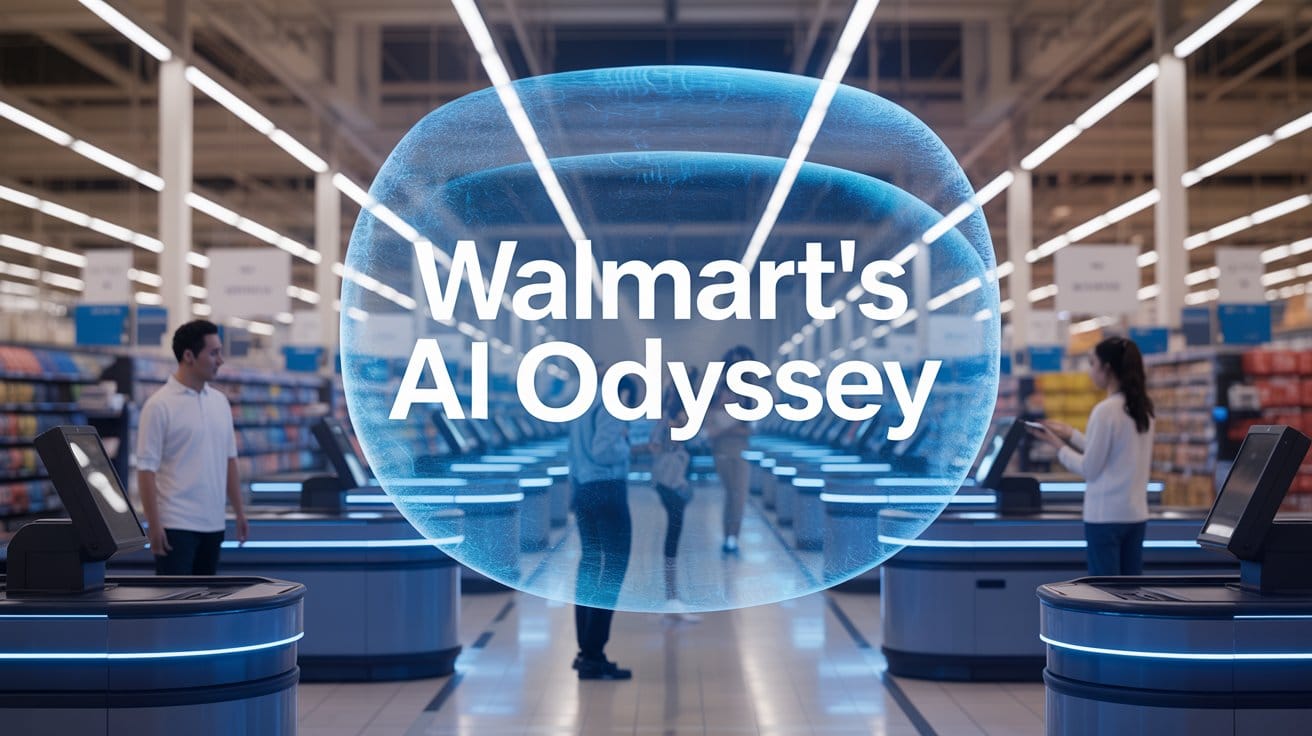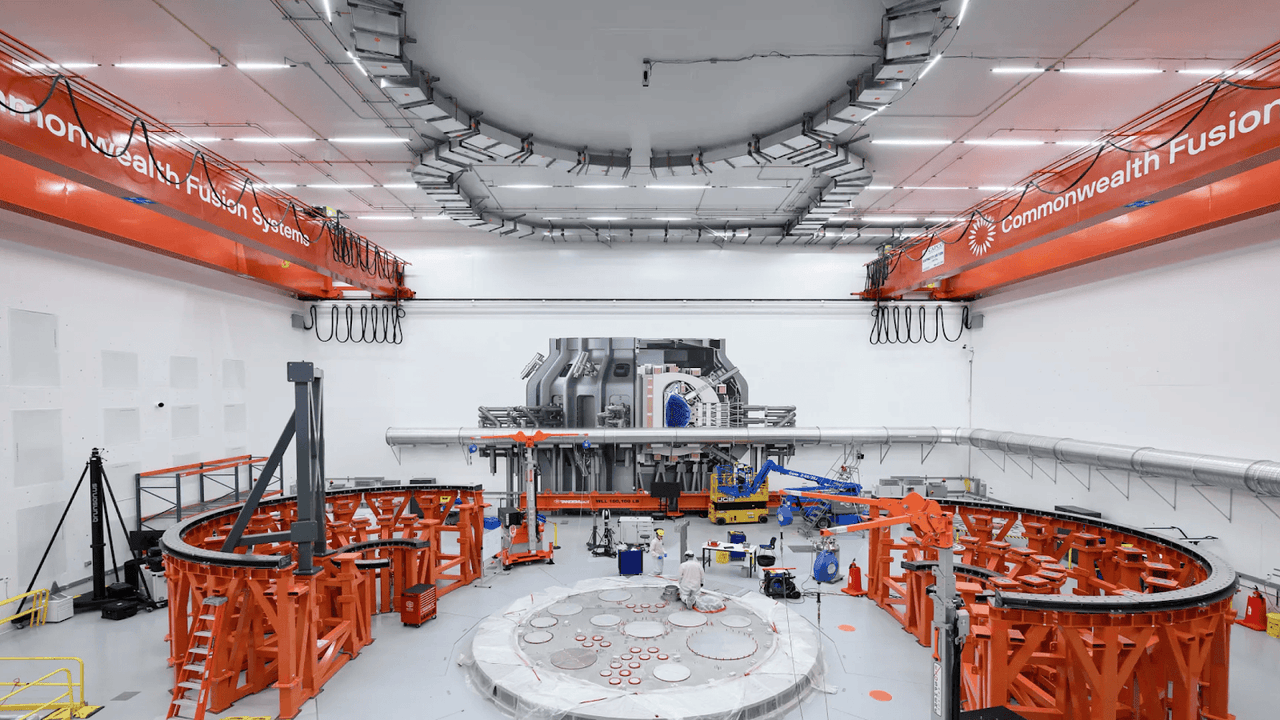Walmart’s AI Odyssey: A Deep Dive into the Retail Giant’s Secret Plans

In the ever-evolving world of retail, where the only thing moving faster than a Black Friday crowd is the pace of technological innovation, Walmart has always been a heavyweight contender. But what happens when the world’s largest retailer’s AI strategy gets accidentally revealed by Microsoft’s head of AI security after a protest? Well, you get a front-row seat to the future of retail—one that’s as high-tech as it is high-stakes, and, frankly, a bit more transparent than Walmart probably intended.
The Accidental Leak: Microsoft’s Oops Moment
First, let’s set the stage. Imagine a protest outside Microsoft’s headquarters, placards waving, AI ethics being debated, and in the midst of it all, the head of AI security at Microsoft, perhaps distracted by the commotion, inadvertently reveals confidential details about Walmart’s AI initiatives. It’s the tech world’s equivalent of accidentally hitting “reply all” on an office email chain—except this time, the stakes are billions of dollars and the future of retail.
While the full transcript of the leak remains classified (and probably the subject of several frantic internal emails), the gist is clear: Walmart is all-in on AI, and their plans are as ambitious as they are comprehensive.
Walmart’s AI Vision: Beyond Rollback Prices
Walmart’s AI ambitions are not just about optimizing supply chains or automating checkouts (although those are certainly on the menu). The retailer is aiming to reinvent the entire shopping experience, both online and in-store, using a suite of advanced AI technologies.
Walmart’s supply chain is already a marvel of logistics, but AI is set to take it to the next level. By leveraging machine learning algorithms, Walmart aims to predict demand with uncanny accuracy, optimize inventory levels, and reduce waste. Imagine a world where your favorite flavor of ice cream is never out of stock—unless, of course, everyone suddenly develops a craving for pistachio at the same time.
The leaked details suggest Walmart is deploying AI-driven forecasting models that analyze everything from weather patterns to social media trends. If a TikTok video featuring a new snack goes viral, Walmart’s AI will know before your taste buds do. This hyper-responsive supply chain could save Walmart billions in lost sales and excess inventory, while also reducing food waste—a win-win for profits and the planet.
Remember the days of waiting in line at Walmart, clutching your cart and wondering if you should have just ordered online? Those days may soon be over. Walmart’s AI plans include the rollout of checkout-free stores, where sensors and cameras track what you pick up, and AI automatically charges your account as you leave. It’s like shoplifting, but legal—and with fewer alarms.
This technology, inspired by Amazon Go but scaled for Walmart’s massive footprint, relies on computer vision, deep learning, and a network of sensors that would make NASA jealous. The goal is to create a seamless shopping experience, reduce labor costs, and, perhaps most importantly, eliminate the dreaded “unexpected item in the bagging area” message forever.
Walmart’s AI isn’t just about logistics—it’s about you. The leaked plans reveal a push toward hyper-personalized shopping experiences, powered by AI-driven recommendation engines. Think of it as having a personal shopper who knows your preferences, dietary restrictions, and even your mood (based on your recent purchases—ice cream and tissues, anyone?).
Using data from Walmart’s app, website, and in-store sensors, the AI will suggest products, offer personalized discounts, and even remind you when you’re running low on essentials. It’s convenience on steroids, and it’s designed to keep you coming back for more.
Behind the scenes, Walmart is deploying an army of robots and automated systems, all orchestrated by AI. From shelf-scanning robots that check for out-of-stock items to automated fulfillment centers that pick and pack online orders at lightning speed, the goal is clear: efficiency, accuracy, and scalability.
The leaked details indicate that Walmart is investing heavily in robotics startups and AI-powered warehouse management systems. These technologies promise to reduce labor costs, speed up order fulfillment, and minimize errors—a crucial advantage in the cutthroat world of e-commerce.
Of course, with great AI power comes great responsibility—and, apparently, great protests. The leak also highlighted Walmart’s efforts to address ethical concerns around AI, particularly when it comes to data privacy and algorithmic bias. Walmart is reportedly working with external auditors and ethics boards to ensure its AI systems are transparent, fair, and respectful of customer privacy.
However, skeptics argue that the sheer scale of Walmart’s data collection—tracking everything from shopping habits to in-store movements—raises serious questions about consent and surveillance. It’s a delicate balancing act, and one that Walmart will need to navigate carefully to avoid backlash.
Walmart’s AI Investment and The Competitive Landscape
While the exact figures remain closely guarded, industry analysts estimate that Walmart is investing upwards of $10 billion in AI and automation initiatives over the next five years. This includes partnerships with leading tech firms (Microsoft, obviously, but also Google and several AI startups), as well as in-house R&D.
The return on investment could be substantial. According to a recent report, AI-driven supply chain optimization alone could save Walmart up to $2 billion annually, while automation in fulfillment centers could reduce labor costs by 20%.
| Initiative | Estimated Investment | Potential Annual Savings |
|---|---|---|
| AI Supply Chain Optimization | $3 billion | $2 billion |
| Checkout-Free Stores | $2 billion | $1 billion |
| Personalized Shopping AI | $1 billion | $500 million |
| Robotics & Automation | $4 billion | $1.5 billion |
Walmart’s AI push is not happening in a vacuum. Amazon, Target, and Alibaba are all racing to deploy similar technologies, each hoping to out-innovate the others. But with its vast network of stores, deep pockets, and relentless focus on efficiency, Walmart is uniquely positioned to lead the charge.
The accidental leak has given competitors a glimpse into Walmart’s playbook, but it may also serve as a wake-up call. In the AI arms race, transparency is not always a virtue—but agility and execution are.
Walmart’s AI Gamble—Brilliant or Bonkers?
Walmart’s AI strategy is both bold and necessary. The retail landscape is changing faster than you can say “rollback,” and those who fail to adapt will be left behind, clutching their analog cash registers.
Walmart’s focus on AI-driven supply chains, checkout-free stores, personalized shopping, and automation is not just about cutting costs—it’s about redefining the customer experience for the 21st century. Yes, there are risks, particularly around privacy and ethics, but the potential rewards are enormous.
If Walmart can execute on these plans—and avoid any more accidental leaks—they could set a new standard for retail, one where convenience, efficiency, and personalization reign supreme. And if nothing else, we can all look forward to a future where the only thing unexpected in the bagging area is how easy shopping has become.
Walmart’s AI plans, as inadvertently revealed by Microsoft, paint a picture of a retailer determined to stay ahead of the curve. From AI-powered supply chains to checkout-free stores and personalized shopping experiences, Walmart is betting big on technology to drive its next phase of growth. The road ahead will not be without challenges, but if history is any guide, Walmart is more than capable of turning a leak into a tidal wave of innovation.
So next time you’re in Walmart, keep an eye out for the robots, sensors, and maybe even a Microsoft executive lurking in the aisles. The future of retail is here—and it’s powered by AI.





